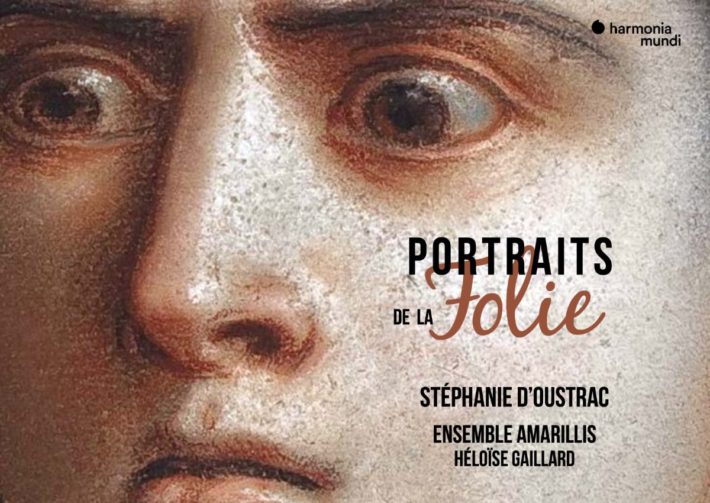It’s not immediately clear what is the theme of this album if looking only at the tracklist or the brief booklet assay, somewhat awkwardly translated to English. But the marketing material for this release tells us that the theme of madness was “personified as ‘Folly’ in the seventeenth and eighteenth centuries”. Ensemble Amarillis and Héloïse Gaillard evoke the many qualities of this frivolous, vivacious and foolish fictional personality.
The intriguing program draws on a range of extracts from the baroque period covering opera, instrumental music and songs as well as two complete pieces. Although mostly lesser-known works, they are not musically inferior; on the contrary, as they are given highly engaging performances and prove an enjoyable and quite fascinating listen. The unity between the players is especially strong throughout, sharing Gaillard’s vision and direction and bringing a unifying consistency to the performances. Each piece is considered and well-paced; phrasing is natural, dynamics varied without being fussy. Most of all, there is a sense of spontaneity which prevails from beginning to end.
Ensemble Amarillis is a small band of players but, because of the closeness with which they are recorded and their driving energy, they sound like a significantly larger group. Their string intonation is particularly strong and their tone rich which aids this illusion. The continuo — including lute and harpsichord, is often florid and extravagant, adding many highly elaborate flourishes. In the more reflective pieces, they take a step back, aiding the ambiance, while in the faster ones, they project the music forward. Gaillard, who is a virtuoso on the recorder and oboe, features in a number of pieces, including the ‘concerto a 7’ by Johann David Heinichen, in which she is featured as oboe soloist. Her interplay with the other musicians reveals the tight and sympathetic connections she formed with the ensemble.
Related Classical Music Reviews
- Review: “Farinelli” – Cecilia Bartoli, Antonini
- Review: Picchi – Canzoni da Sonar – Concerto Scirocco, Genini
- Review: “Facce D’amore” – Jakub Józef Orliński, Emelyanychev
Mezzo-Soprano Stéphanie d’Oustrac features on several tracks in a range of arias, songs and an early cantata from Handel. d’Oustrac’s English is mostly natural, just occasionally the odd word has a slightly peculiar pronunciation. Otherwise I’ve found her performance’s varied and interesting, tailoring the level of drama appropriately. In the extract from André Cardinal Destouches’ “Sémélé” (track 5), she is communicative but modestly restraint, whereas in the Purcell she brings something more colorful, expressive and operatic.
Handel’s cantata ‘Ah! crudel nel pianto mio’ , is an early work dating from his time in Italy. It lacks all the distinctive hallmarks of his more famous operas and oratorios, however it fits perfectly into the program. d’Oustrac is impressive here once more, differentiating the diction and style of performance to the more refined cantata. Balancing the internet passion of the narration with a deep musicality, her pure tones contrast expressively with the controlled, colorful and effective vibrato.
The recorded ambiance of the venue is not immediately apparent, because of the proximity at which the musicians have been captured, but there is a gentle and effective reverberance. A well-programed release, then, even if not fully comprehensible at first listen. After spending some time with this album, however, I’ve found the program flowing with finely polished performances. A recommended listen.

“Portrait de la Folie“
Stéphanie d’Oustrac – Mezzo-Soprano
Ensemble Amarillis
Héloïse Gaillard – Conductor
Harmonia Mundi, CD HMM902646
Read more classical music reviews or visit The Classic Review Amazon store
Follow Us and Comment:
[wd_hustle id=”HustlePostEmbed” type=”embedded”]











